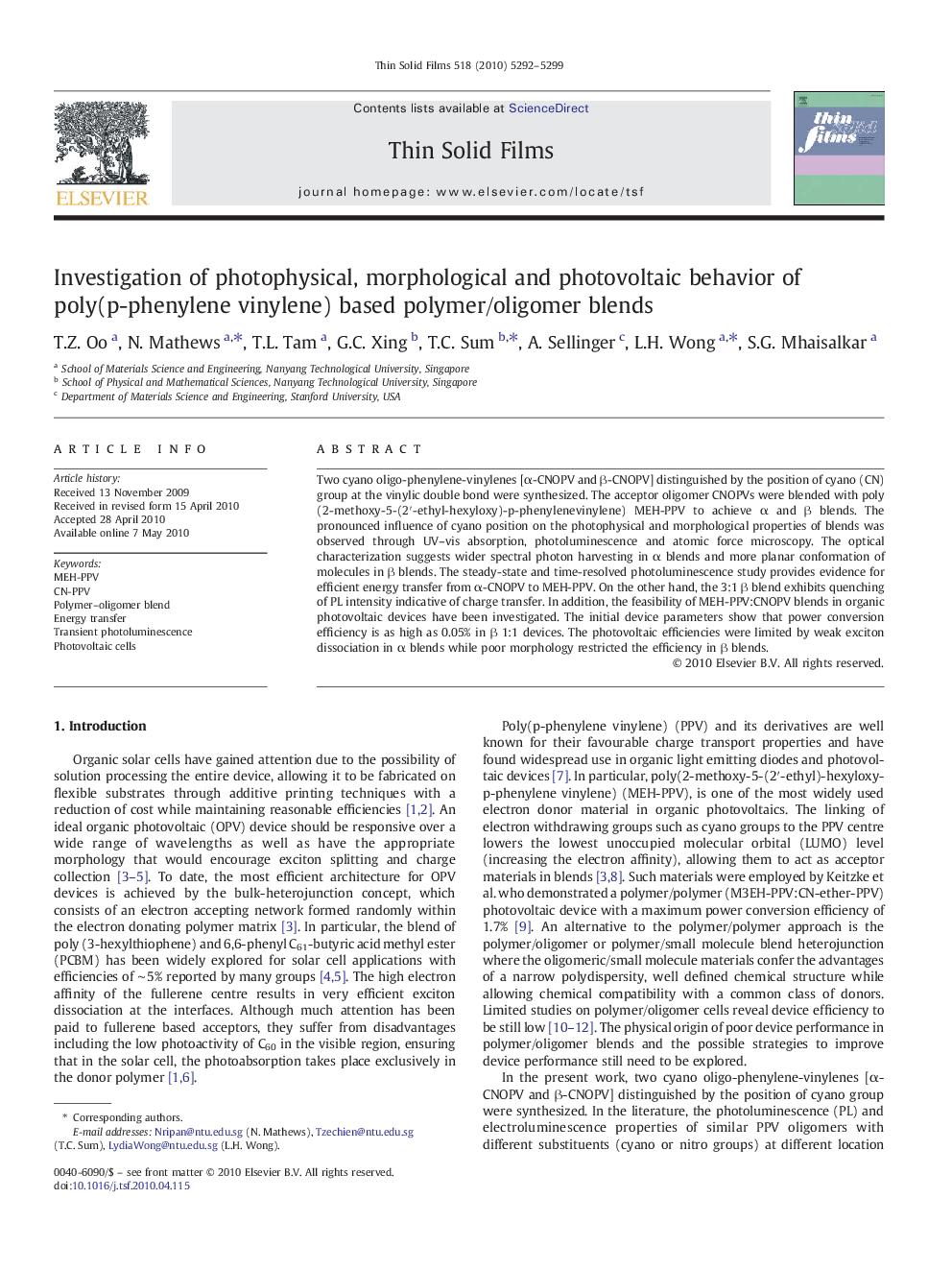| Article ID | Journal | Published Year | Pages | File Type |
|---|---|---|---|---|
| 1670318 | Thin Solid Films | 2010 | 8 Pages |
Two cyano oligo-phenylene-vinylenes [α-CNOPV and β-CNOPV] distinguished by the position of cyano (CN) group at the vinylic double bond were synthesized. The acceptor oligomer CNOPVs were blended with poly(2-methoxy-5-(2′-ethyl-hexyloxy)-p-phenylenevinylene) MEH-PPV to achieve α and β blends. The pronounced influence of cyano position on the photophysical and morphological properties of blends was observed through UV–vis absorption, photoluminescence and atomic force microscopy. The optical characterization suggests wider spectral photon harvesting in α blends and more planar conformation of molecules in β blends. The steady-state and time-resolved photoluminescence study provides evidence for efficient energy transfer from α-CNOPV to MEH-PPV. On the other hand, the 3:1 β blend exhibits quenching of PL intensity indicative of charge transfer. In addition, the feasibility of MEH-PPV:CNOPV blends in organic photovoltaic devices have been investigated. The initial device parameters show that power conversion efficiency is as high as 0.05% in β 1:1 devices. The photovoltaic efficiencies were limited by weak exciton dissociation in α blends while poor morphology restricted the efficiency in β blends.
